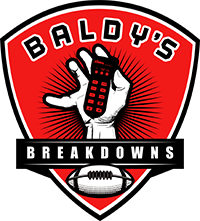
In the unforgiving world of the NFL, injuries can be the ultimate game-changer. A single injury to a key player can send shockwaves through a team, disrupting finely tuned strategies, depleting rosters, and turning playoff aspirations into desperate survival missions. As fans, we feel the anguish of these moments—they capture our hearts, redefine seasons, and transform heroes into heartbreaking question marks. The cascading impact of injuries is a harsh reality that not only tests the mettle of the athletes but also the resilience of entire franchises.
The Harsh Reality: How Injuries Decimate NFL Teams
The noise of roaring crowds, the impact of bone-crunching hits, and the euphoria of a game-winning touchdown—all stand as testaments to the raw intensity of the NFL. However, lurking behind the highlight reels and athletic prowess is a perilous adversary that every team dreads: injuries.
Beyond the heartbreak for the individual athlete, the injury impact can dismantle well-laid plans, shake locker rooms, and redefine seasons. In this piece, we will delve deep into how injuries not only affect players but also shape the very fate of NFL teams.
A Strategic Catastrophe
NFL teams spend countless hours crafting the perfect game plan. Coaches meticulously design offensive and defensive schemes that hinge on their star players. When an injury happens, particularly to a cornerstone player, those strategies are instantly upended.
Offensive coordinators lose their primary weapons, defenses become vulnerable without their linchpins, and entire game plans have to be reworked on the fly.
Take, for example, the 2017 Philadelphia Eagles when quarterback Carson Wentz suffered a season-ending injury. Wentz was a key driver for the team’s offense, fully immersing fans into Super Bowl dreams. The injury could have meant a catastrophic end to their ambitions, forcing their coaches to realign their strategies under backup quarterback Nick Foles.
Remarkably, despite all odds, they triumphed—a glimmer of hope in an otherwise brutal narrative.
Roster Depletion: The Domino Effect
The NFL season is a grueling marathon, with each team enduring a physically demanding 17-game schedule, plus potential playoff matches. Injuries not only affect the immediate play options but also broaden roster concerns. Depth becomes a critical factor.
When starters are sidelined, secondary players must step up, increasing their exposure and highlighting previously hidden weaknesses.
Injuries force general managers and executives to scramble to fill gaps. Teams often have to dip into their practice squads or even free agency. These sudden changes not only strain the financial salary cap but often disrupt team cohesion.
Think of the 2020 San Francisco 49ers, who faced an onslaught of injuries across both offense and defense. They trudged on, utilizing every available resource, but the injury impact exposed the team’s fragile underbelly and resulted in an unexpected derailment of their season.
Emotional and Psychological Fallout
Beyond the tactical repercussions, the psychological toll of injuries is immense. For athletes, recovering from a significant injury means not just physical rehabilitation but a mental battle. It’s about overcoming the anxiety of re-injury and regaining confidence.
The unspoken fear that lingers can affect performance levels and shake one’s career foundation.
The ripple effect extends to the locker room. The loss of a teammate—especially a well-respected leader—can erode morale and cohesion. Then there’s the fanbase, often crushed by the loss of their favorite players.
The intense connection between fans and players amplifies the emotional weight, leaving all stakeholders grappling with the disappointing twists of fate.
The Unsung Heroes: Medical Teams and Coaches
Amid the chaos, credit must be given where due. The athletes aren’t alone in their battle—medical teams and coaches become the unsung heroes in these narratives. They work tirelessly, blending sports medicine with psychology, ensuring these warriors return stronger and more resilient.
The dynamic between a coach and the team’s medical staff sets the tone for comeback trails. Proper guidance, transparency, and coordinated medical strategies can expedite recovery and reintegration.
As the physical injuries heal, smart coaching balances the athlete’s mental health, ensuring they don’t rush back prematurely—an elegant dance of caution and optimism.
Looking Forward: Preventive Measures
In the NFL’s relentless pursuit to mitigate injury risks, advances in sports science and technology play a crucial role. Investments in better equipment, rigorous preseason conditioning programs, and injury prevention protocols are reshaping the game. However, despite these Herculean efforts, football’s inherent physicality ensures that the risk will never fully be eradicated.
The league’s commitment to player safety has also spurred rule changes designed to protect athletes. Helmet-to-helmet collision rules, limitations on contact during practices, and improvements in concussion protocols have evolved significantly.
While these measures are crucial, the complete elimination of injuries seems utopian in a world driven by high-impact collisions and unfathomable human effort.
Conclusion
In the grand tapestry of the NFL, injuries remain the tragic but often defining threads. They challenge the resilience of teams, redefine seasons, and force fans and players alike to confront the unpredictable nature of the sport.
As heartbreaking as they can be, they also offer moments of sublime heroism and rebirth. From strategic recalibrations to emotional reconciliations, injuries weave an unbreakable component into the narrative of a season, ensuring that the story of the NFL is as bittersweet as it is exhilarating.
For more insights and behind-the-scenes breakdowns, follow our Facebook page, stay updated through our X account, and dive deeper into our analyses on YouTube.
